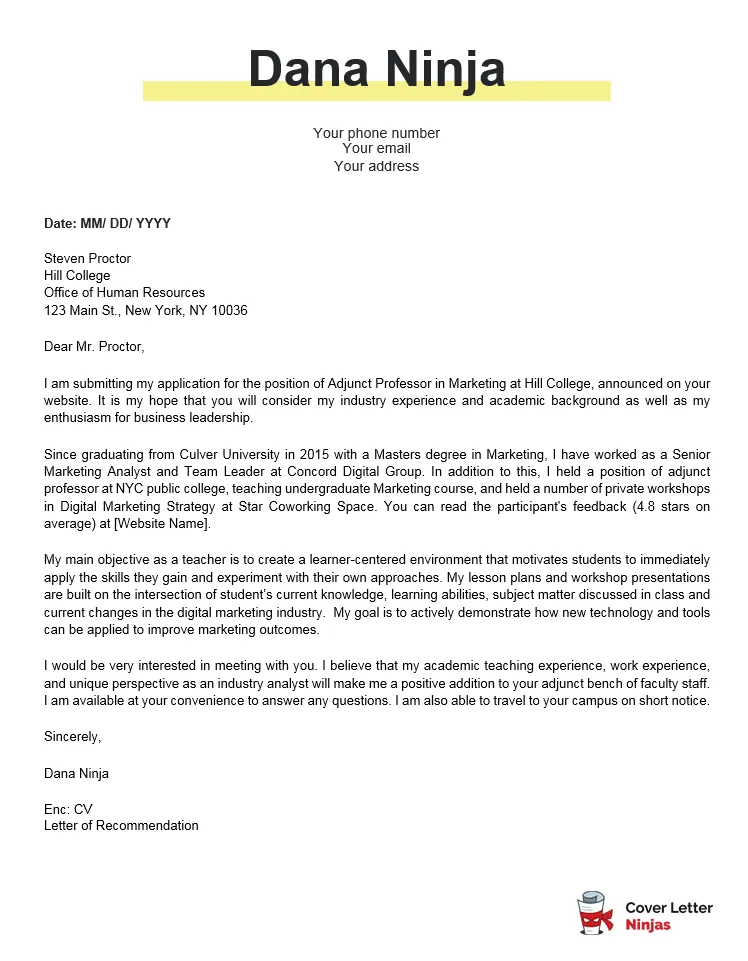Crafting a Compelling Professor Cover Letter
A professor cover letter is your first chance to make a strong impression on a search committee. It’s not just a formality; it’s a crucial marketing document. It should concisely and effectively present your qualifications, highlight your achievements, and demonstrate your suitability for the specific position. The cover letter should showcase your expertise, experience, and passion for academia. It must be meticulously crafted to capture the attention of the hiring committee, clearly articulating your unique value proposition and setting you apart from other applicants. Remember, this document is your voice before you enter the interview room, so take the time to make it as polished and persuasive as possible. The cover letter should effectively communicate your ability to contribute to the department’s goals, research initiatives, and teaching mission.
Highlighting Your Research Prowess
Research is a cornerstone of any professor’s role, and your cover letter must clearly and persuasively demonstrate your research capabilities. Start by summarizing your research interests, and explicitly state how they align with the department’s needs and research focus. Highlight your significant publications in reputable journals, emphasizing your contributions to the field. Mention any awards, grants, or fellowships you’ve received, as these are tangible indicators of your research success. Quantify your achievements whenever possible, such as the number of citations your work has garnered or the impact factor of the journals in which your articles have been published. Demonstrate your ability to secure funding, and if you have experience mentoring students, be sure to mention this as well, illustrating your capacity to develop the next generation of researchers. A well-written and compelling research section will significantly strengthen your application.
Quantifying Your Achievements
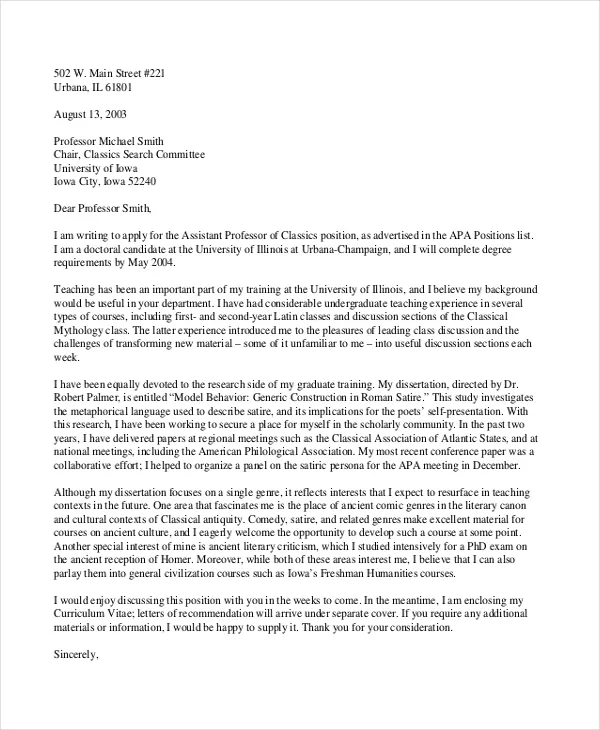
Numbers speak volumes. Instead of simply stating you’ve published several papers, provide specific figures. For example, instead of saying ‘I have a strong publication record,’ say ‘I have published 15 peer-reviewed articles in top-tier journals with an average impact factor of 4.5.’ Include the number of citations your work has received, the amount of grant funding you’ve secured, and the number of students you’ve mentored. Such precision conveys not only your productivity but also the impact and recognition of your research. Use percentages to demonstrate growth or improvement. For instance, if you’ve improved student outcomes, state the percentage increase. Always back up your statements with verifiable data to strengthen your claims.
Showcasing Your Teaching Experience
Teaching is a core responsibility of a professor, and your cover letter must demonstrate your ability to excel in this area. Provide a concise overview of your teaching experience, including the courses you’ve taught and the level of the students you’ve instructed (undergraduate or graduate). If possible, briefly mention your teaching philosophy, highlighting your commitment to student engagement and effective pedagogical practices. Describe the methods you employ to foster a positive learning environment, such as innovative teaching techniques, the use of technology in the classroom, or approaches that promote active learning. Indicate any training or certifications related to teaching. Demonstrate your passion for teaching and mentoring by highlighting your commitment to student success, and illustrate how you create an engaging and inclusive learning environment.
Providing Concrete Examples of Teaching Success
Don’t just say you’re a good teacher; provide concrete examples. Cite specific instances where you’ve positively impacted student learning. Did you receive positive student evaluations? Mention the average score, and provide quotes from students, if permitted. Did you develop new teaching materials or improve a course curriculum? Detail the specifics of your contribution and the impact it had on student learning. Did you mentor students who went on to achieve success? Provide examples. When writing, use action verbs to describe your teaching methods, and show how they lead to tangible results. Be specific about the outcomes of your teaching efforts, and quantify your accomplishments whenever possible.
Demonstrating Alignment with the Department
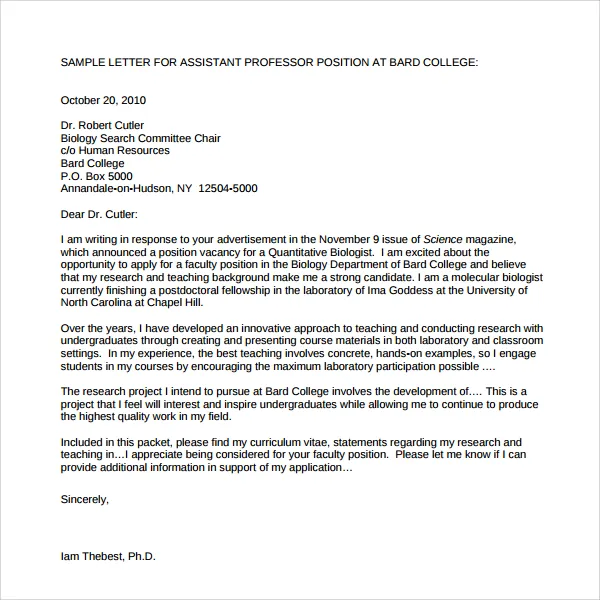
A successful professor cover letter clearly shows that you’ve thoroughly researched the department, and that your skills and experience align with their specific needs and strategic goals. Show that you understand the department’s research focus, teaching priorities, and values. Highlight how your research interests complement the existing faculty’s work, and demonstrate how you can contribute to ongoing projects or initiatives. Show your understanding of the courses the department offers, and express your enthusiasm for teaching these or similar courses. Reference specific faculty members, publications, or projects that resonate with your background. Indicate a genuine interest in becoming a member of the department and contributing to its success. Alignment is key for the search committee to see you as a good fit.
Researching the Department’s Needs
Before writing your cover letter, conduct in-depth research on the department, its faculty, and its current research and teaching priorities. Review the department’s website, faculty profiles, and recent publications. Identify any specific research areas or courses where your expertise would be particularly relevant. Pay attention to the department’s strategic plan, if available, and identify areas where your skills align with their goals. Mention specific faculty members whose research interests align with your own, and indicate how you might collaborate with them. When you demonstrate a clear understanding of the department’s specific needs, it increases your chances of making a favorable impression. Make it clear you understand their goals and are there to help them achieve them.
Tailoring Your Letter to the Specific Position
A generic cover letter won’t cut it. Tailor your letter to each specific professor position. Carefully review the job description, and identify the key requirements and expectations. Address each requirement explicitly in your letter, providing concrete examples of how your skills and experience meet those criteria. Use the same language and terminology as the job description, and highlight any qualifications that are specifically mentioned. If the job description lists specific research areas or teaching responsibilities, make sure you clearly address them. Tailoring your letter demonstrates that you are genuinely interested in the position and have taken the time to understand the requirements. Use the job description as your guide. The more specific you are in your letter, the more likely you are to get noticed by the search committee.
Showcasing Your Leadership and Collaboration Skills
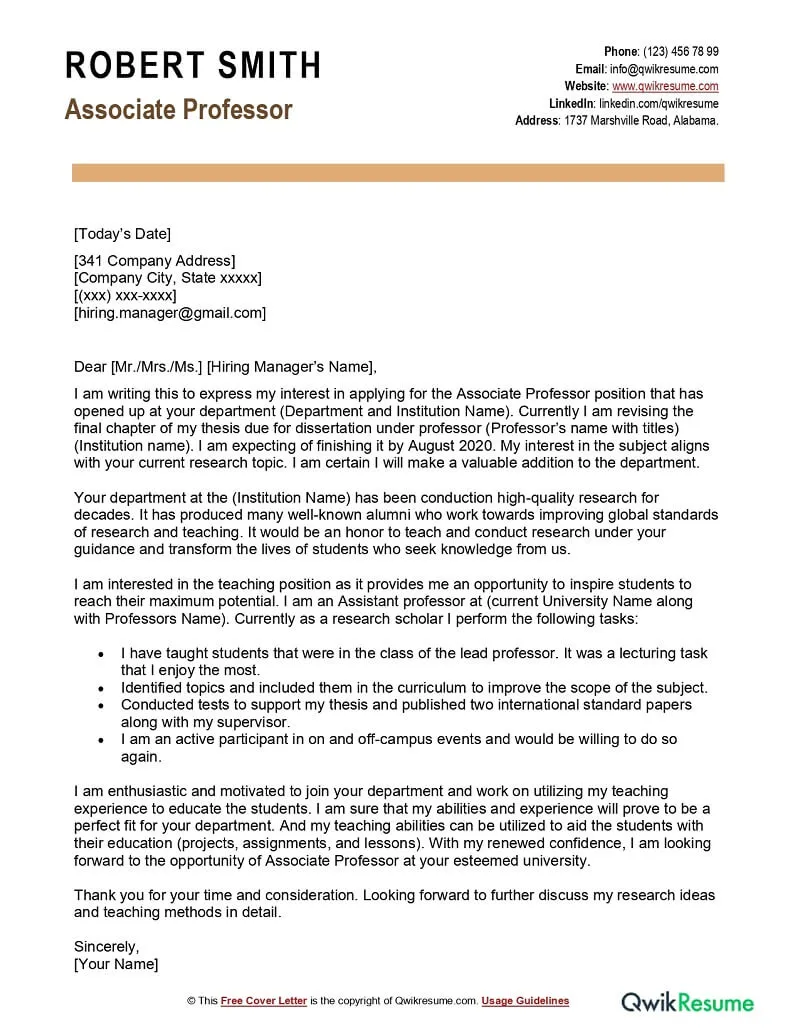
Professors often take on leadership roles within their departments or universities. Your cover letter should highlight your leadership abilities. Provide examples of how you’ve led research teams, managed projects, or taken on other leadership roles. Explain your contributions to committees or other university initiatives. Highlight your ability to collaborate with others. Detail any experience you have working with interdisciplinary teams, co-authoring publications, or participating in collaborative research projects. Describe how you foster a collaborative and supportive environment, and demonstrate your ability to work effectively with diverse colleagues. Effective professors are team players, so show how you contribute to a positive work environment.
Emphasizing Grant Writing and Funding Experience
Securing funding is a crucial aspect of a professor’s role, particularly at research-intensive institutions. Your cover letter should highlight your experience in grant writing and fundraising. Describe your success in obtaining grants from various funding agencies. Specify the total amount of funding you’ve secured and the types of grants you’ve been awarded (e.g., NIH, NSF). Mention your role in securing the grant. Did you write the entire proposal? Did you contribute to specific sections? Did you help mentor others on grant writing? Detail the impact of your grants and how they’ve supported your research or other initiatives. If you have experience in managing grants, make sure you mention this as well. Highlight your ability to secure external funding, as it is a key factor for any university.
Proofreading and Editing Your Cover Letter
A cover letter filled with errors can immediately disqualify you. Proofreading and editing are essential steps. Before you submit your cover letter, carefully proofread it for any typos, grammatical errors, and inconsistencies. Use spell-check and grammar-check tools, but don’t rely on them entirely. Read the letter aloud to catch awkward phrasing and ensure that the flow is smooth and coherent. Get a second pair of eyes to review your letter. Ask a colleague, mentor, or career counselor to proofread your cover letter and provide feedback on its clarity, conciseness, and overall effectiveness. A well-edited cover letter will demonstrate your attention to detail and your professionalism.
Ensuring Clarity and Conciseness
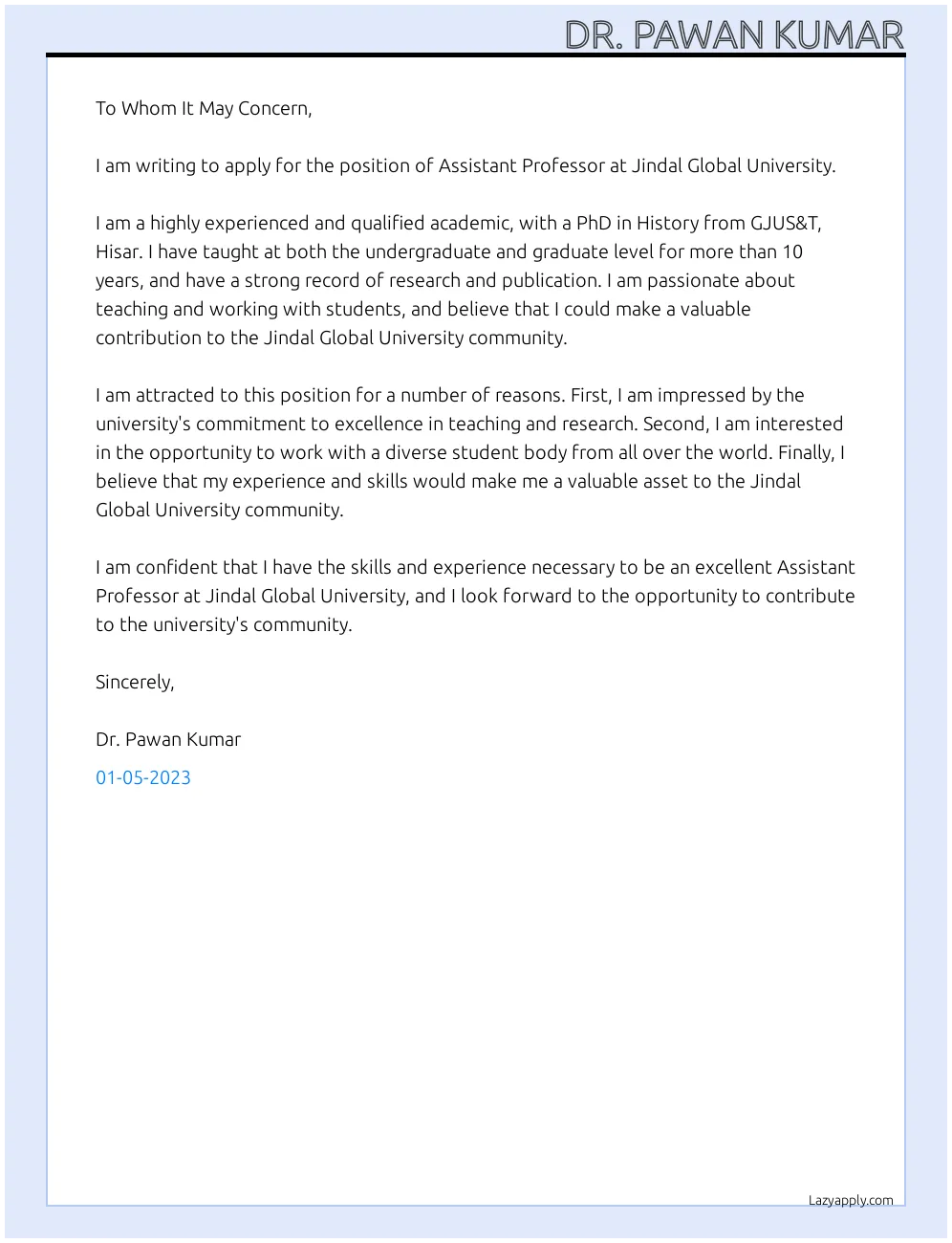
Keep your cover letter clear, concise, and to the point. Use strong action verbs to describe your accomplishments. Avoid jargon and technical terms that might not be understood by all members of the search committee. Use short paragraphs and bullet points to break up text and make the letter easier to read. Focus on the most relevant information and avoid unnecessary details. Your goal is to highlight your key qualifications and make a strong case for why you are the best candidate for the position. A cover letter that is easy to read will likely get the attention of the hiring committee, which is exactly what you are looking for.
Proofreading for Grammar and Spelling Errors
Thorough proofreading is a must to ensure your cover letter is free of errors. Carefully review the letter for any grammatical mistakes, spelling errors, and punctuation errors. Pay attention to the use of correct tenses, subject-verb agreement, and the appropriate use of articles and prepositions. Check for any inconsistencies in formatting or style. Use a spell checker, but also manually proofread the document, as spell checkers might not catch all errors. Have a colleague or mentor proofread the letter, as another person can often spot errors that you might miss. A clean and error-free cover letter will demonstrate your professionalism, and it will make a strong positive impression.
Formatting Your Cover Letter Effectively
The format of your cover letter is as important as its content. An easy-to-read and well-formatted letter will make a positive impression. Choose a professional and readable font. Use standard fonts such as Times New Roman, Arial, or Calibri, and make sure the font size is appropriate (typically 11 or 12 points). Use consistent formatting throughout the document, including margins, line spacing, and paragraph indentation. Use headings and subheadings to organize the content and make it easier to scan. Make sure the letter has a clear and professional layout, with appropriate spacing between paragraphs and sections. The letter should fit on one page, unless otherwise specified. Ensure that it looks visually appealing and easy to read.
Using a Professional and Readable Font
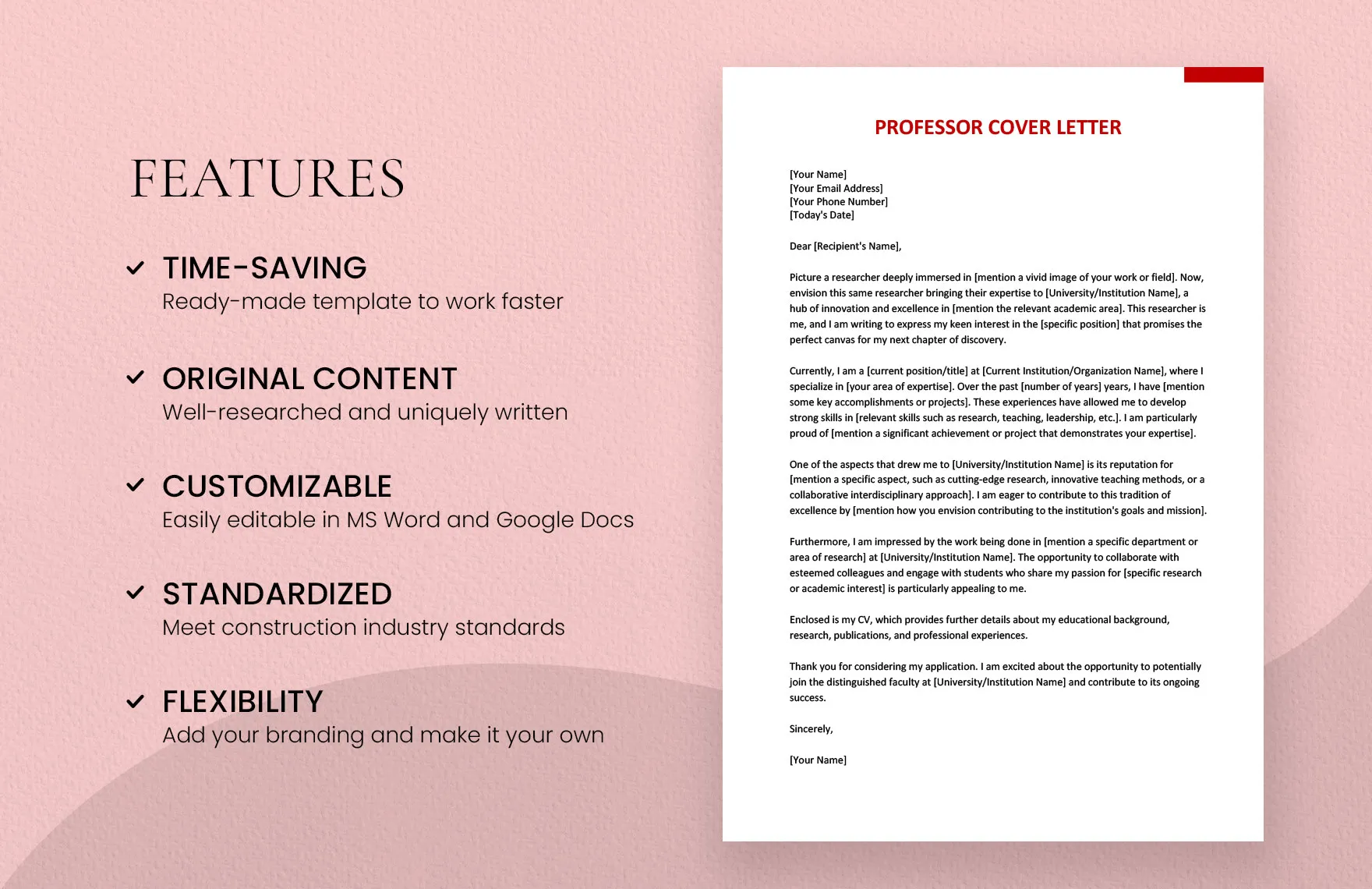
The font you choose can greatly affect the readability and professionalism of your cover letter. Select a font that is easy on the eyes, and that is standard and widely accepted. Avoid using overly fancy or unusual fonts, as they can distract the reader. Use a font size that is appropriate and comfortable to read (11 or 12 points). Use standard fonts such as Times New Roman, Arial, or Calibri. Make sure the font is consistent throughout the document. Ensure that the font is clear and easily readable, even when printed. The right font helps project professionalism and makes a strong first impression.
Structuring Your Letter for Easy Navigation
Structure your cover letter so that it is easy to read and navigate. Use a clear and logical layout, with headings and subheadings to organize the content. Start with a strong opening paragraph, and then highlight your key qualifications and achievements. Use bullet points or numbered lists to break up text and make key information easier to scan. Use short paragraphs, and leave sufficient space between paragraphs and sections. Make sure the structure is logical, and that it guides the reader through your qualifications. This structure makes it easier for the reader to quickly grasp the main points and assess your suitability for the position.
Making a Strong First Impression
Your cover letter is your opportunity to make a strong first impression. It’s your chance to stand out from other applicants and show why you are the perfect fit. Start by writing a compelling opening paragraph that grabs the reader’s attention and clearly states your interest in the position. Throughout the letter, focus on showcasing your achievements, skills, and experiences that are relevant to the specific job requirements. Use strong action verbs, and provide concrete examples to demonstrate your qualifications. Tailor the letter to the specific department and position. Proofread your letter carefully to ensure that it is free of errors, and that it is well-formatted and easy to read. A well-written and professional cover letter will undoubtedly increase your chances of success.
